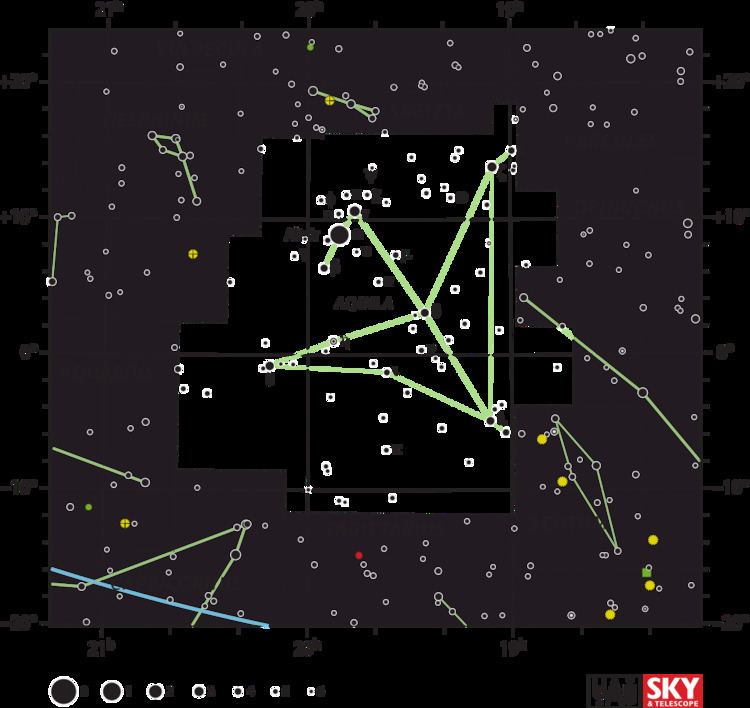Magnitude 4.02 Apparent magnitude (V) 4.02 | ||
 | ||
Similar Theta Aquilae, Delta Aquilae, Lambda Aquilae | ||
Epsilon Aquilae (ε Aql, ε Aquilae) is the Bayer designation for a binary star in the equatorial constellation of Aquila. It has an apparent visual magnitude of 4.02 and is visible to the naked eye. Based upon an annual parallax of 21.05 mas, Epsilon Aquilae lies at a distance of approximately 155 light-years (48 parsecs) from Earth. This is a spectroscopic binary system. The pair orbit each other over a period of 1,271 days (3.5 years) with an eccentricity of 0.27.
It has the traditional name Deneb el Okab, from an Arabic term ذنب العقاب ðanab al-cuqāb meaning "the tail of the eagle", and the Mandarin names Woo and Yuë, derived from and represent the state Wu (吳), an old state was located at the mouth of the Yangtze River, and Yue (越), an old state in Zhejiang province (together with 19 Capricorni in Twelve States asterism). According to the R.H. Allen's works, it shares names with ζ Aquilae. Epsilon Aquilae is more precisely called Deneb el Okab Borealis, because is situated to the north of Zeta Aquilae, which can therefore be called Deneb el Okab Australis.
The primary component of this system is an evolved giant star with a stellar classification of K1 III. It has more than double the mass of the Sun and has expanded to ten times the Sun's radius. It shines with 54–fold the Sun's luminosity, which is being radiated from its outer envelope at an effective temperature of 4,760 K. At this heat, it glows with the orange-hue of a K-type star. This has been designated a barium star, meaning its atmosphere is extremely enriched with barium and other heavy elements. However, this is disputed, with astronomer Andrew McWilliam (1990) finding normal abundances from an s-process.
